SPACE September 2023 (No. 670)
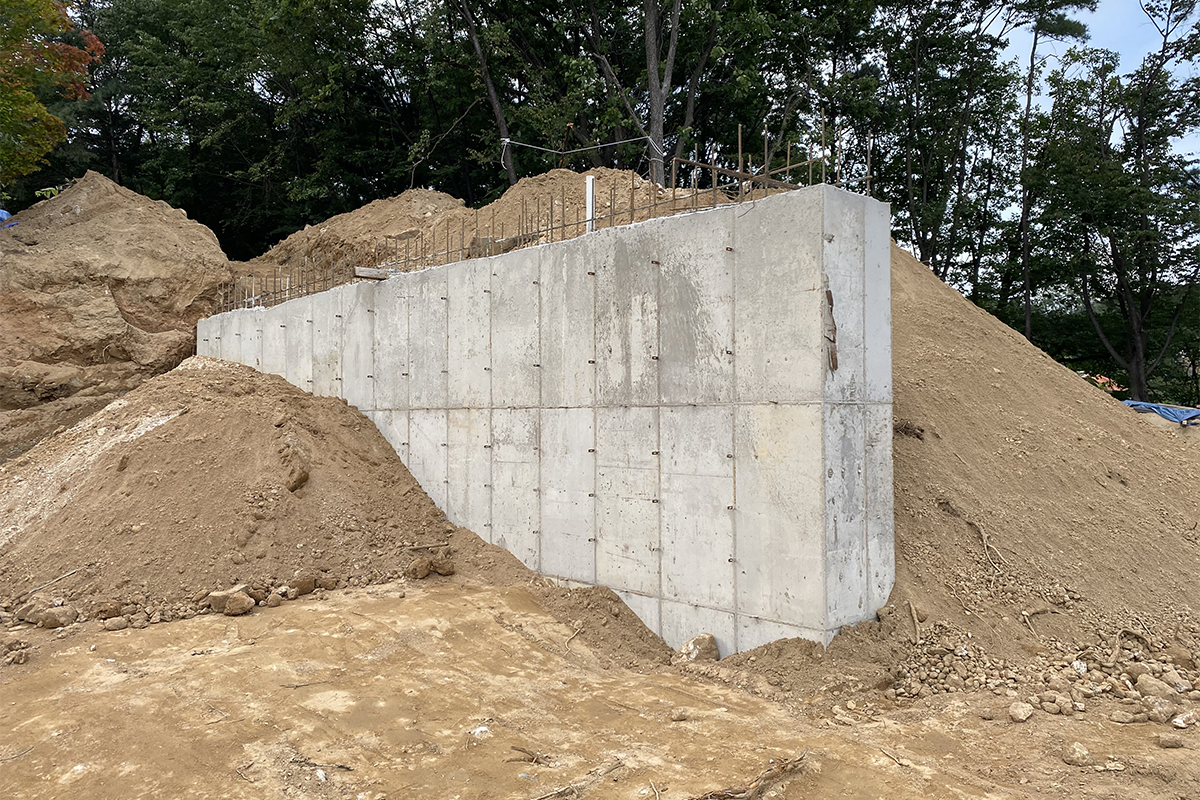
House on the Hill (2023, on-site) / Image courtesy of NAMELESS Architecture
When we started NAMELESS Architecture, we considered architects to be ‘dreamers’. Four or five years later, we described architects as ‘mediators’. Was it because we spent more time unravelling relationships in reality than dreaming? Now, more than ten years later, we have come to think architects should be ‘dreamers’.
In the early days of the office, we were often criticised for practising ‘naïvely’. When we entered the field of architecture, we sensed the meaning of it in negative terms. We looked to the more experienced and intelligent architects and tried to fill in the gaps. As we gained experience, we lost as much as we gained. It reminded us that architecture is a process that cannot be judged by any one outcome, good or bad. Here, we have architecture. We begin to get a glimpse of an architecture we can enjoy. It is the possibilities and sometimes naïve ideas that exist between perceived imperfections that keep us creating.
To capture the relationship between two objects, we must first look to their limits. Boundaries are defined by need, but they can be crossed by connective relationships. The lines of difference are blurred, and that is where the importance of relationships comes in. The act of finding meaning in seemingly opposing and paradoxical relationships is a clue to how we see the world and how we build.
Concrete and Stone
Concrete is liquid stone. It is made from a mixture of stone powder, gravel, sand, and water that solidifies in response to specific temperatures and pressure points. The ingredients, recipe, and processes used to make concrete are fundamentally the same as that of natural stone. Nevertheless, while stone is found in nature, concrete is made to realise an intended form. Concrete has the potential to be as flexible as fluid.
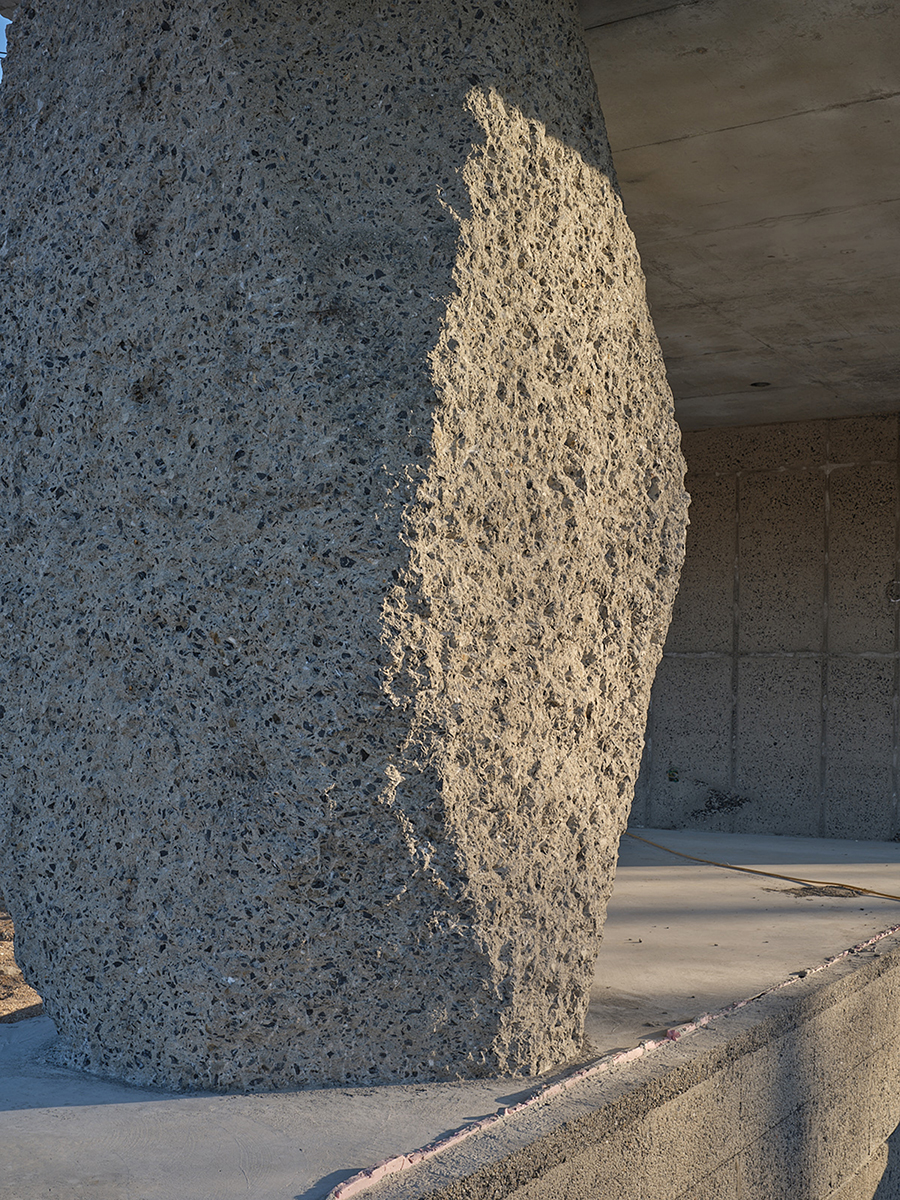
CONCRETEWALL (2023, on-site)
Material and Immaterial
Material has solidity. Rough and heavy or soft and fragile materials form properties of things according to their own texture and weight. On the other hand, immateriality is a phenomenon by which a substance is not fixed due to the absence of solidity. Penetrating light, projected landscapes, and flowing surfaces are perceived through fluid space and time, not material. Materiality and immateriality are not perceived as different but as one phenomenon through their connection and collision.
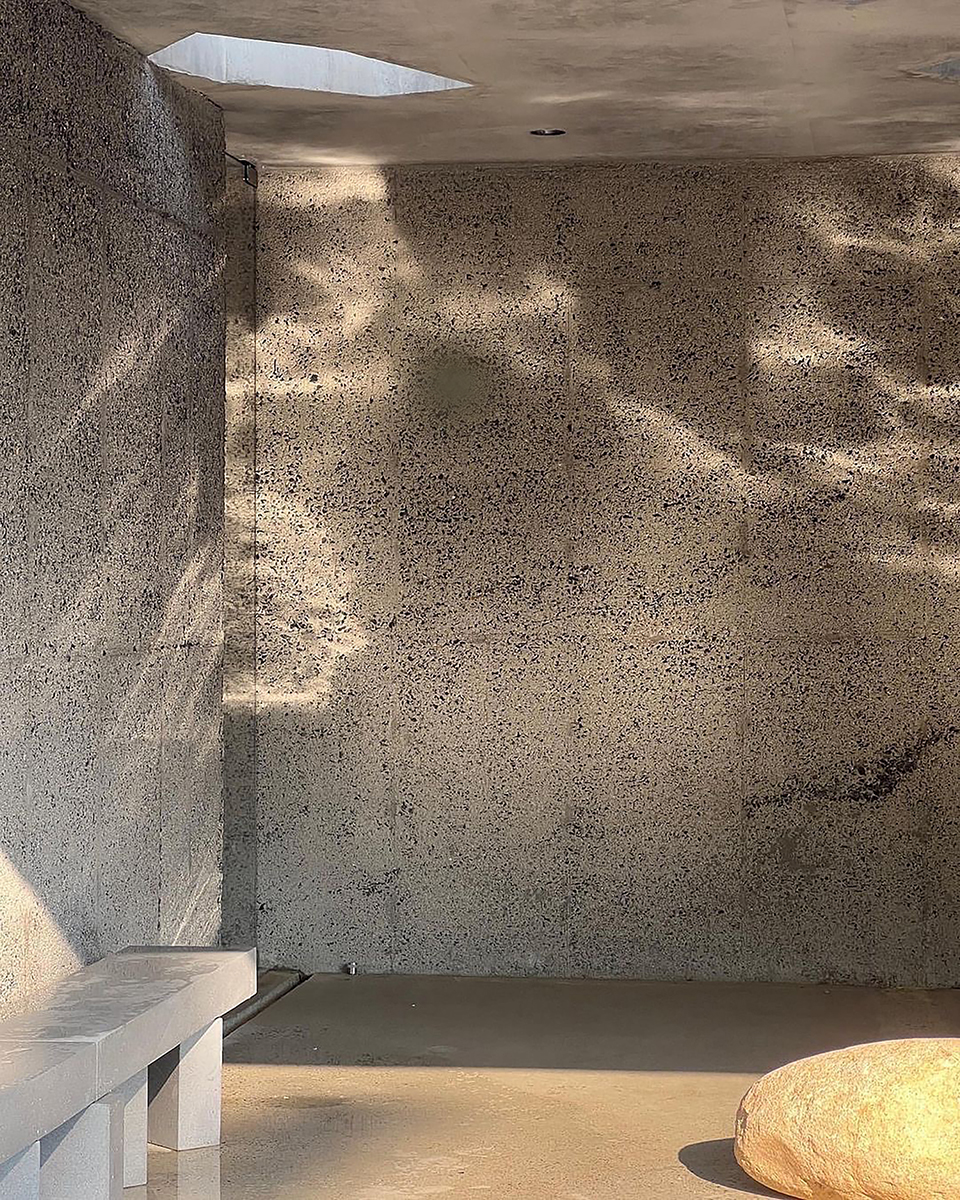
CONCRETEWALL (2023, on-site) / ©Ahn Kiwon
Poetry and Prose
Poetry is implicit. It is a compressed language that is not as easily understood as prose but leaves room for interpretation and allows us to experience difference and newness in every moment. I imagine a space wherein all cause and effect is not perfectly organised and defined but where there is room for interventions by the people who use it; an architecture that can accommodate changes in time, light and nature; a poetic architecture that inspires people through the space itself and leaves room for new interpretations.
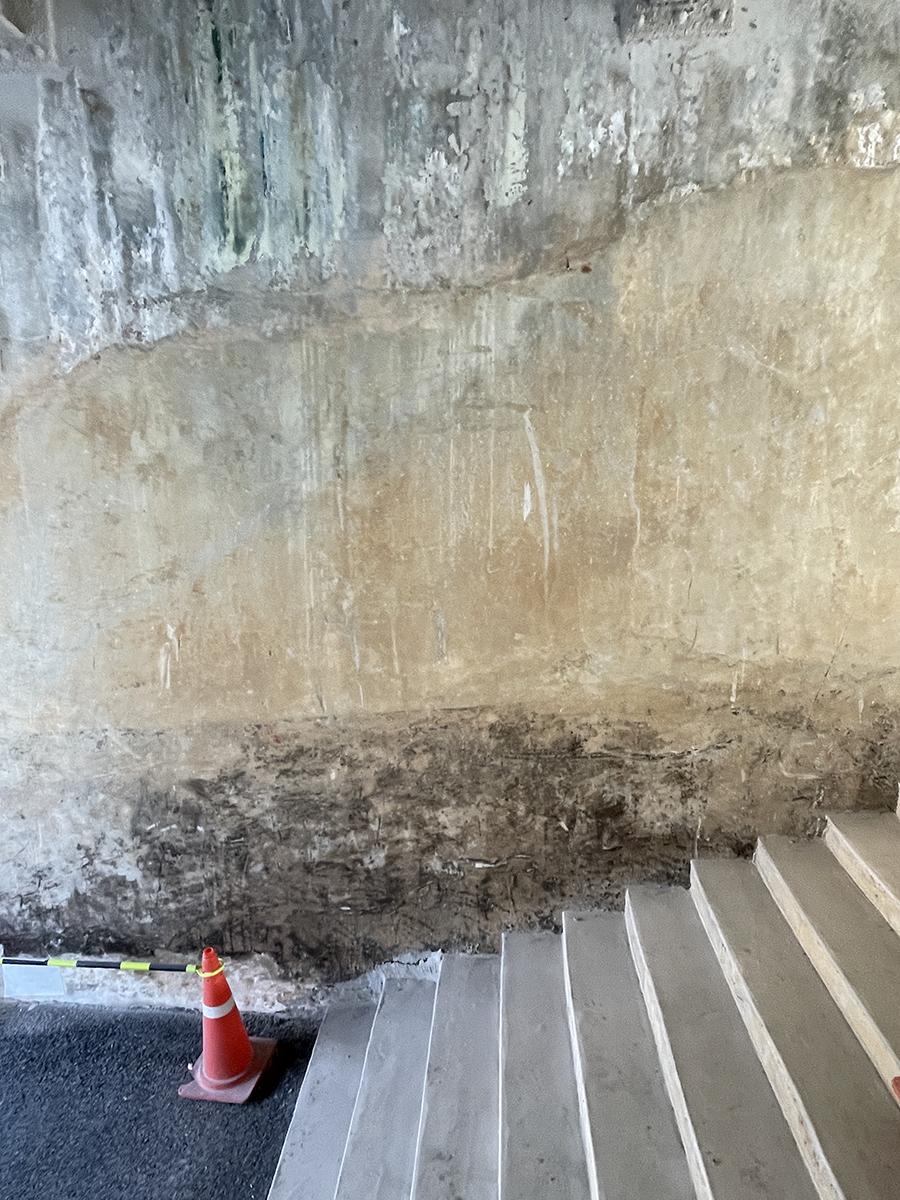
D School Complex (2021, on-site) / Image courtesy of NAMELESS Architecture
Gravity and Human Force
Gravity is the force of the earth, directed from top to bottom. The power of the person shaping architecture, on the other hand, is acting with the opposite force, from the bottom up. Architecture is about distributing the balance of these opposing forces through the essential elements of columns, beams, and roofs. All architecture resists and obeys gravity at the same time.
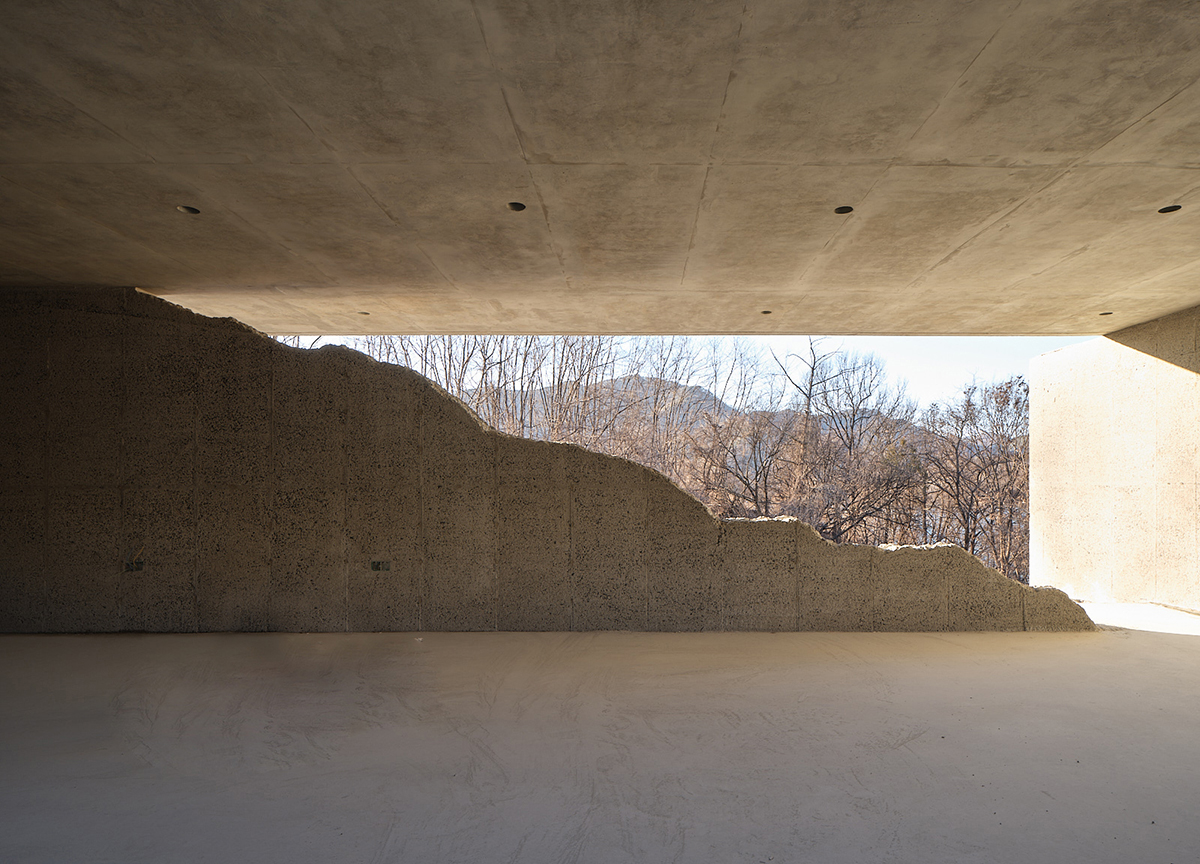
CONCRETEWALL (2022, on-site) / Image courtesy of NAMELESS Architecture
Land and Architecture
When we think about the fundamentals of architecture, we look to the ground. It is where we live, the foundation on which our buildings are built, and has lasting value. Architecture borrows from the time of the earth. The land has an intention hidden in a corner somewhere. Observing the land’s topography, history, culture, and ecology is about listening to these hidden stories. It is the moment from which construction takes place.
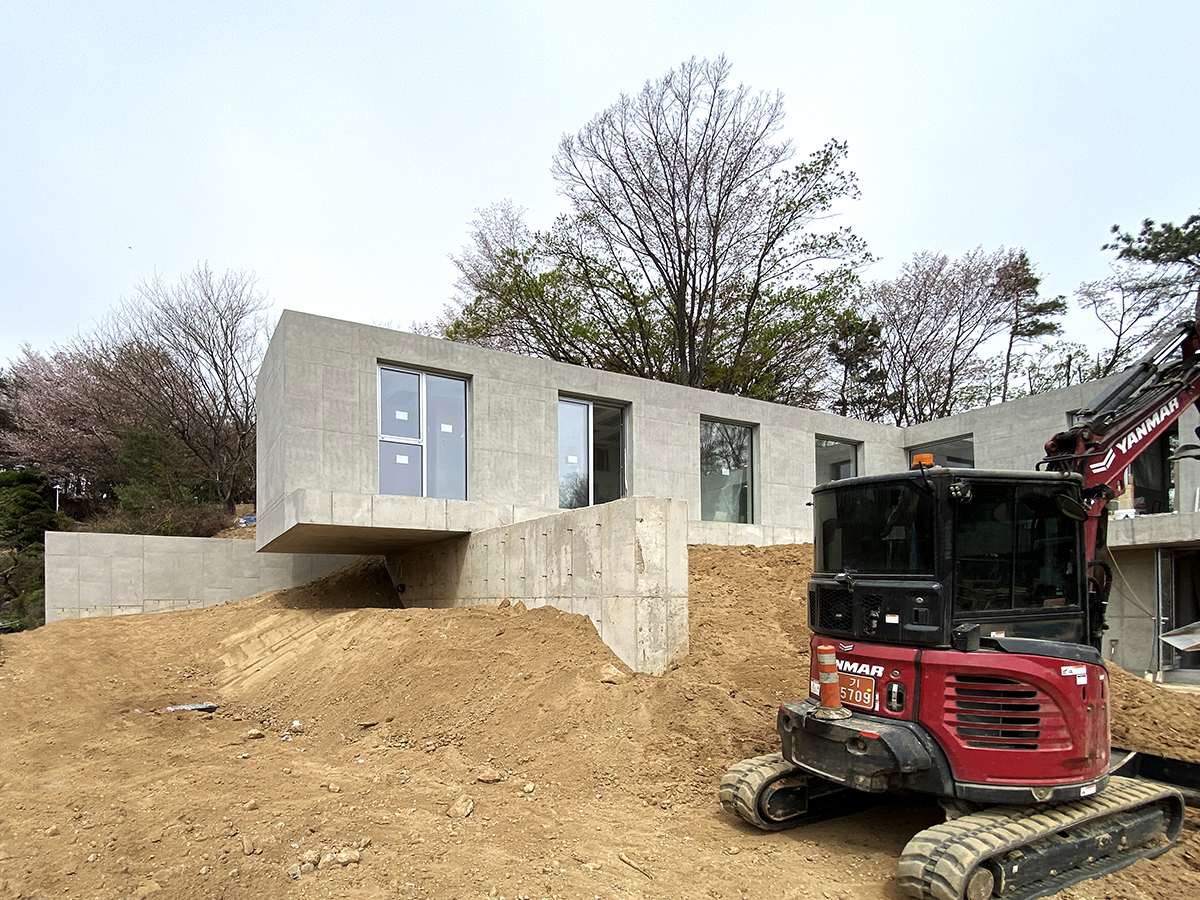
House on the Hill (2023, on-site) / Image courtesy of NAMELESS Architecture
Structure and Surface
The structure is the skeleton and foundation of the building. They are made of highly rigid materials such as concrete and steel and form a physical space. Surfaces, on the other hand, are the backdrop to life, where light lingers and the sensations of the hand touch. It is not about geometry, and it is not about detail. As an entity, not a concept, surfaces create the smell of the place. Structure and surface are categories that can be separated, but when they are one, they add depth to a space by showing that the outside is not different from the inside.
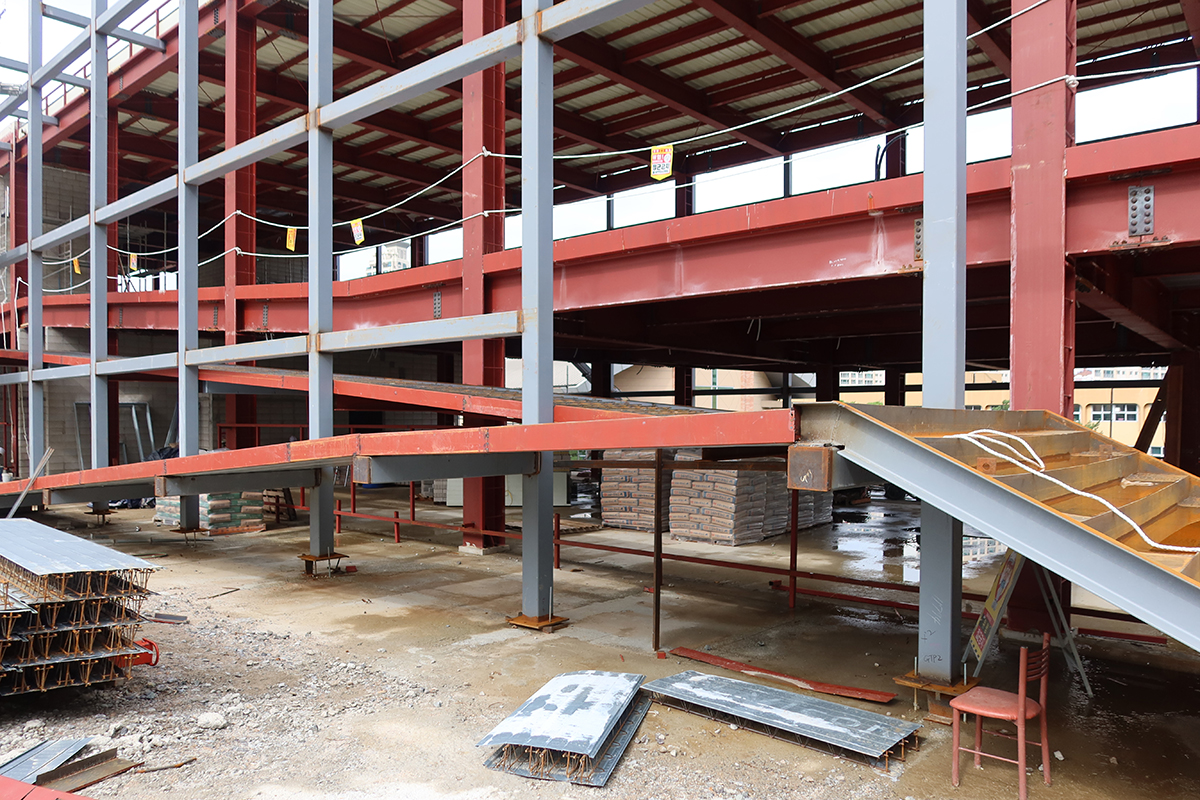
D School Complex (2021, on-site) / Image courtesy of NAMELESS Architecture
Forest and Architecture
The forest is no different when viewing the whole or its parts. The delicate leaves poking through the bark, the roots growing out of the rigid ground, the soil and dead leaves scattered around—all of these elements are trees and the forest. Imagine a forest-like architecture: a space that grows old with time, empty yet full, from small parts to the whole. If such an architecture were possible, it would no longer be architecture but a sublime work of nature.
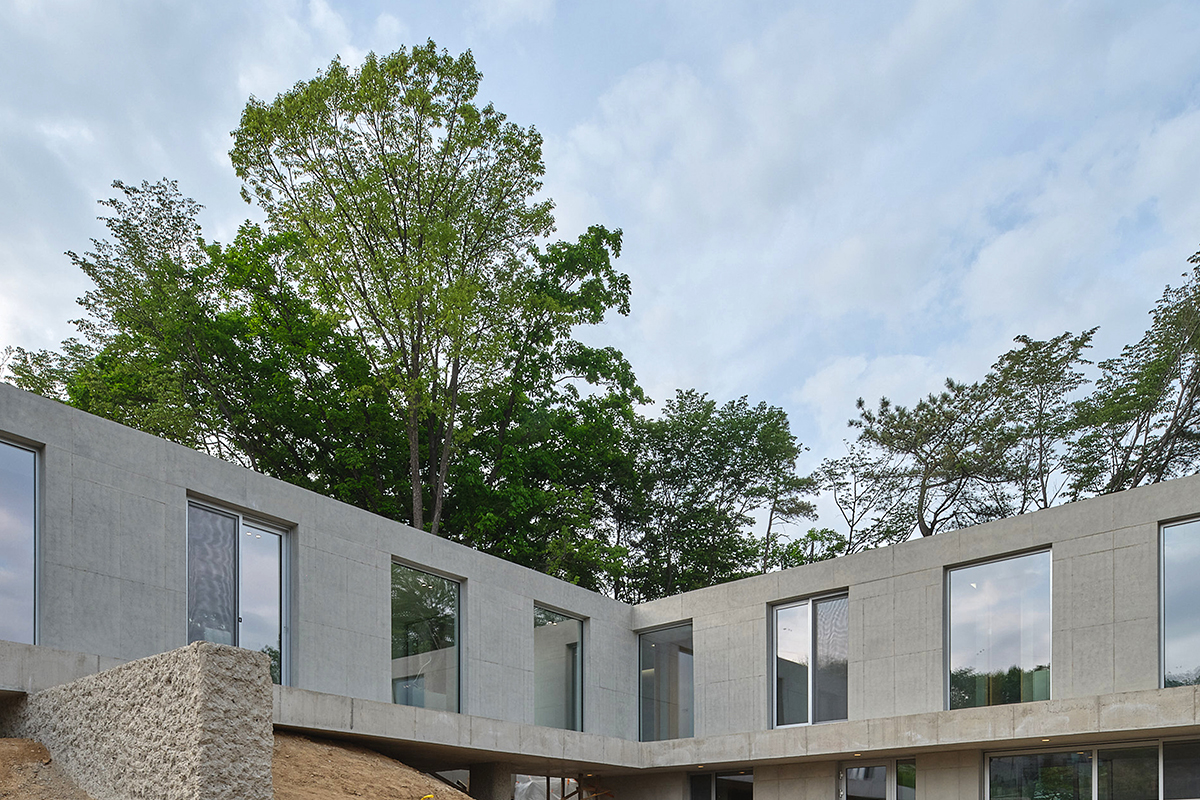
House on the Hill (2023, on-site)
Fluid Grid
A grid is an orthogonal structure comprising a series of straight lines. It is a robust and well-established system that is applied to everything from the division of space to urban structures. Despite the structural clarity of the orthogonal system, grids can be paradoxically fluid because of the interplay of relationships within the orthogonal framework. It is not a challenge to the rigid structure but a flow of encounters and actions that fills the space.
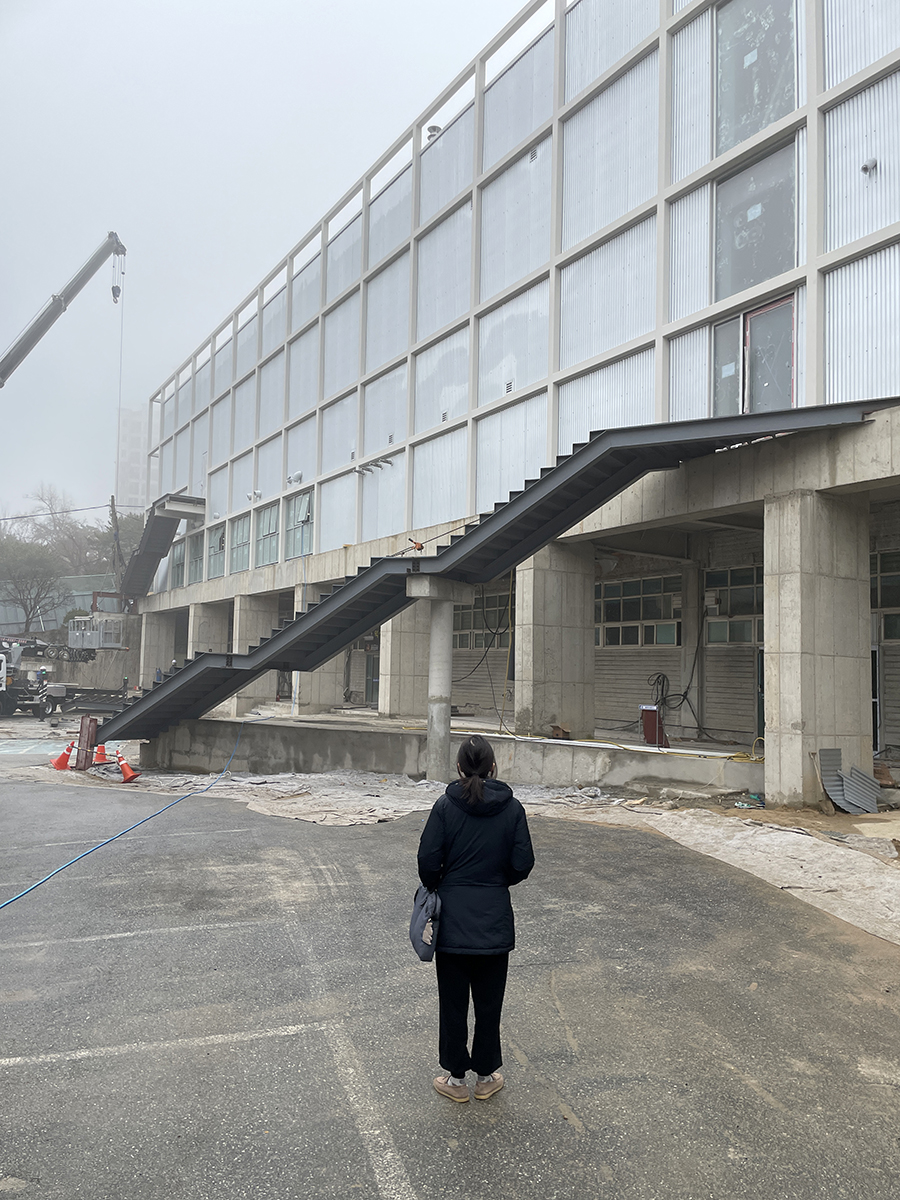
D School Complex (2021, on-site) / Image courtesy of NAMELESS Architecture
Loose Place
Gaps between buildings, slightly wider corridors, circulating exterior pathways, flowed yards—these unbound elements create space. The likelihood of enjoying a place is much higher in a freer, purposeless space than in a dense place of a clear purpose. Space that is all too often considered to be waste creates an incalculable richness for lived experience.
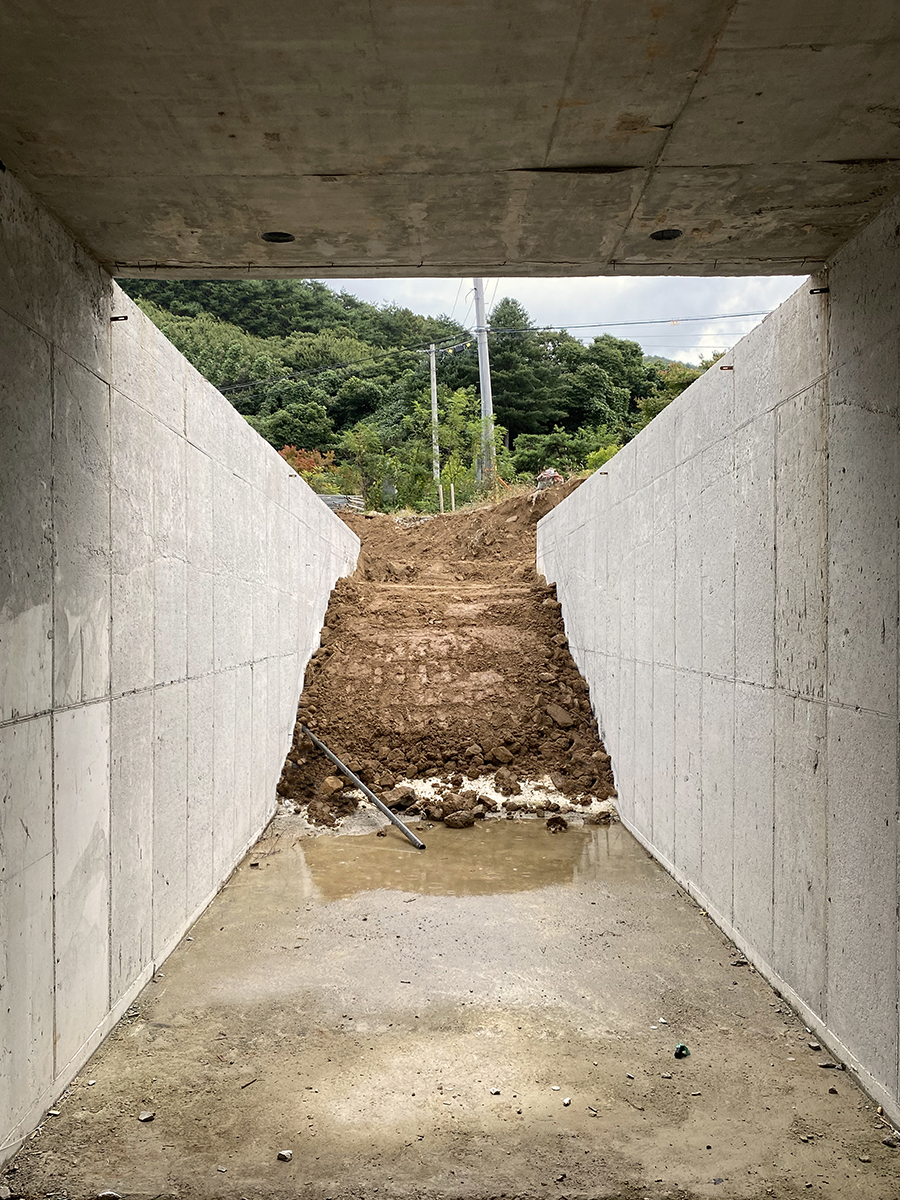
CONCRETEWALL (2022, on-site) / Image courtesy of NAMELESS Architecture
The Real and The Fake
The real can become fake, and the fake can become real at any time. It sounds strange, but it is happening all around us. The boundaries are relative
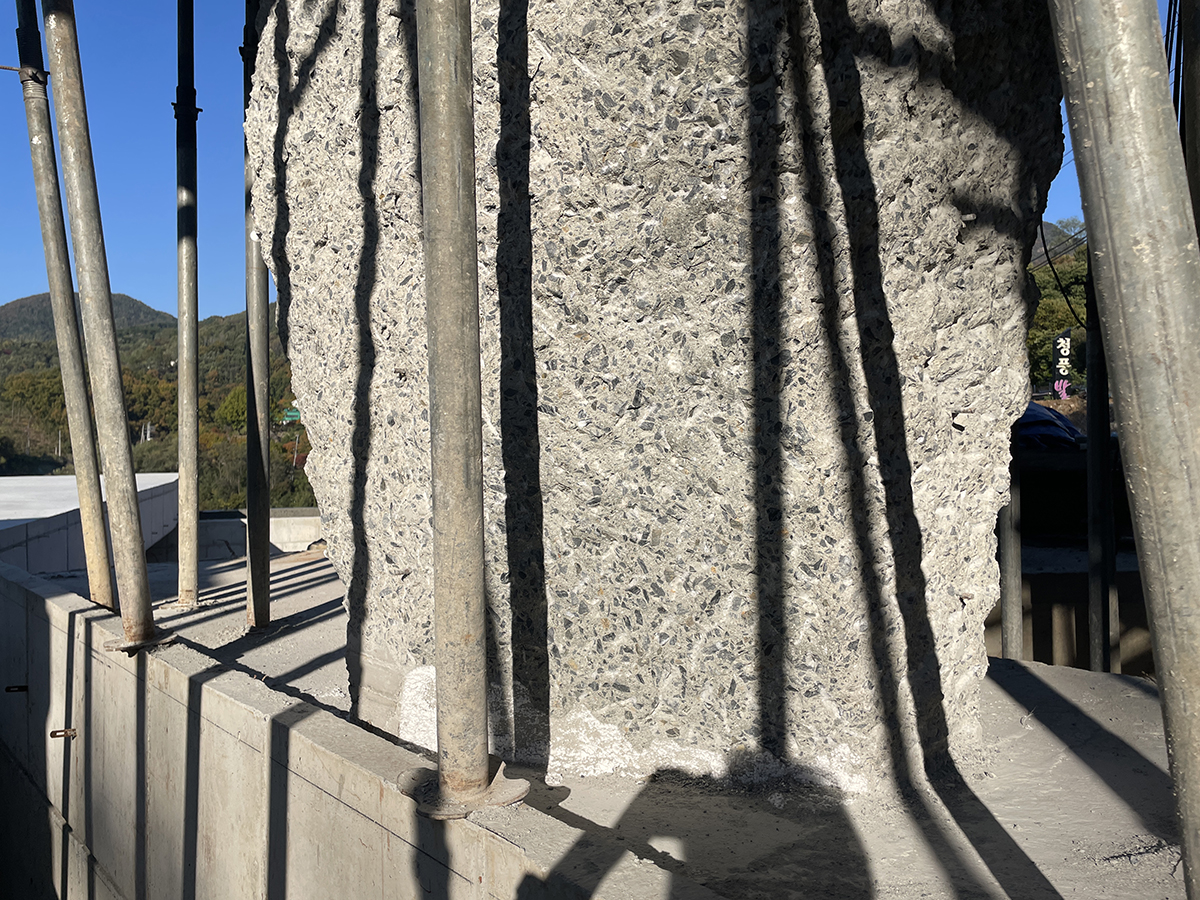
CONCRETEWALL (2022, on-site) / Image courtesy of NAMELESS Architecture
You can see more information on the SPACE No. 670 (September 2023).





